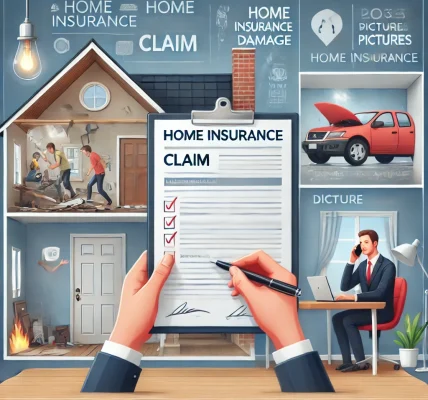Filing an insurance claim can be a stressful experience, but negotiating a fair settlement doesn’t have to be overwhelming. Many policyholders accept the first offer from their insurance company without realizing they have room to negotiate. Whether you’re dealing with a car accident, home damage, or medical claim, understanding how to effectively negotiate can make a big difference in the final payout.
This DIY guide will walk you through the essential steps to ensure you get a fair settlement while staying within legal boundaries.
Understanding the Insurance Claim Process
Before you begin negotiations, it’s important to understand how insurance claims work. When you file a claim:
- You notify the insurer about the damage or loss.
- The insurer assigns an adjuster to assess your claim.
- The adjuster evaluates the damages and determines a settlement amount.
- You receive an initial offer, which you can accept or negotiate.
- A final settlement is agreed upon, and you receive compensation.
Insurance companies aim to minimize payouts while still fulfilling their obligations. That’s why it’s crucial to advocate for yourself and ensure you’re compensated fairly.
Steps to Negotiate a Fair Insurance Settlement
Step 1: Review Your Insurance Policy in Detail
Your insurance policy is a legally binding contract, and understanding its terms, coverage limits, and exclusions is crucial. Carefully review:
- Coverage types (e.g., liability, property damage, medical payments)
- Policy limits (the maximum amount the insurer will pay)
- Deductibles (the amount you must pay before insurance kicks in)
- Exclusions (what is not covered under your policy)
Knowing your policy terms helps you counter low settlement offers with solid evidence.
Step 2: Gather Strong Evidence to Support Your Claim
The more evidence you provide, the stronger your negotiation position. Essential documents include:
- Photographs/Videos: Take clear, time-stamped photos or videos of damages immediately after the incident.
- Official Reports: If applicable, obtain police reports, accident reports, or medical records.
- Receipts & Estimates: Get multiple repair estimates from licensed contractors or mechanics.
- Witness Statements: If others witnessed the incident, their statements can strengthen your case.
Having comprehensive documentation eliminates doubt and puts pressure on the insurer to offer a fair settlement.
Step 3: Calculate the True Value of Your Claim
Insurance companies often start with lowball offers, assuming policyholders will accept them without question. To avoid this:
- Estimate the full cost of repairs: Get quotes from multiple professionals.
- Consider additional expenses: Include rental car fees (for auto claims), temporary housing (for home claims), or lost wages (for injury claims).
- Factor in depreciation vs. replacement value: Some policies cover actual cash value (depreciated cost), while others cover replacement costs.
By calculating the true value of your losses, you can confidently counter any underestimated offer.
Step 4: Be Wary of the First Offer
The first settlement offer is rarely the best one. Insurers often test whether you’ll accept a low payout. Instead of accepting immediately:
✔️ Politely decline and request a written explanation for how they arrived at that figure.
✔️ Compare their valuation with your own evidence (repair costs, medical bills, loss estimates).
✔️ Counter with a reasonable amount, backed by documents.
Example:
If the insurer offers $5,000 but your evidence shows $8,000 in damages, you can counter with $10,000 to leave room for negotiation.
Step 5: Communicate Professionally & Strategically
How you communicate with your insurer affects the outcome. Follow these best practices:
✔️ Remain calm and professional – Avoid emotional arguments. Stick to facts and figures.
✔️ Document all conversations – Keep a record of emails, letters, and phone calls.
✔️ Use written communication when possible – This creates a paper trail for future reference.
✔️ Be persistent but respectful – If you’re being ignored, follow up consistently.
Pro Tip: If negotiating over the phone, take detailed notes and confirm discussions via email.
Step 6: Leverage Comparable Cases & Precedents
If you’re negotiating a car insurance claim, research similar accident settlements in your area.
For home insurance, check public records for payouts on similar property damages.
Presenting comparable case studies shows insurers that you know what’s fair.
Step 7: Request an Independent Appraisal (If Needed)
If your insurance company is significantly undervaluing your claim, consider hiring:
- An independent adjuster – Unlike the insurer’s adjuster, they work for you and provide an unbiased damage assessment.
- A contractor or mechanic – For property or car damage, an expert’s second opinion can support your counteroffer.
If there’s a major disagreement, most policies allow for appraisal or arbitration.
Step 8: Know When to Escalate the Matter
If negotiations stall, take the following steps:
✔️ Ask to speak with a senior claims adjuster – Higher-level employees have more authority to approve better settlements.
✔️ File a complaint with your state’s insurance regulator – If you suspect bad faith insurance practices, regulatory agencies can intervene.
✔️ Consult a lawyer (if necessary) – If you’re dealing with a large or complex claim, a legal expert can ensure you’re not being shortchanged.
Common Mistakes to Avoid When Negotiating an Insurance Settlement
🚫 Accepting the first offer without questioning it – Always verify if it’s fair.
🚫 Providing unnecessary information – Stick to facts; don’t overshare personal details.
🚫 Delaying your claim – Insurers might use delays as an excuse to reduce or deny payouts.
🚫 Signing a release too soon – Once signed, you can’t reopen the claim for additional damages.
Final Thoughts: Be Informed, Confident, and Persistent
Negotiating a fair insurance settlement is not about fighting—it’s about advocating for yourself using facts, evidence, and professional communication.
✅ Know your policy
✅ Gather strong evidence
✅ Reject lowball offers
✅ Communicate strategically
✅ Escalate if necessary



